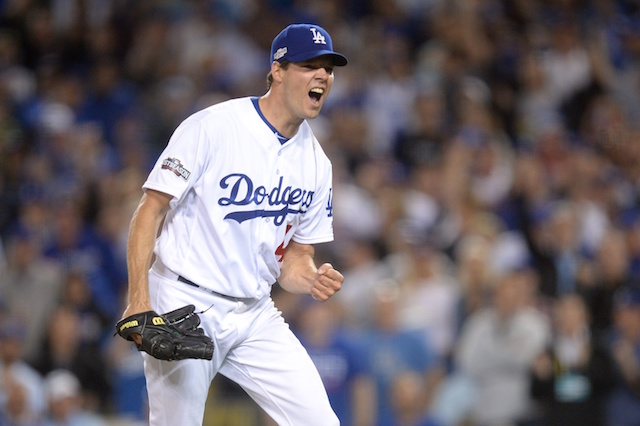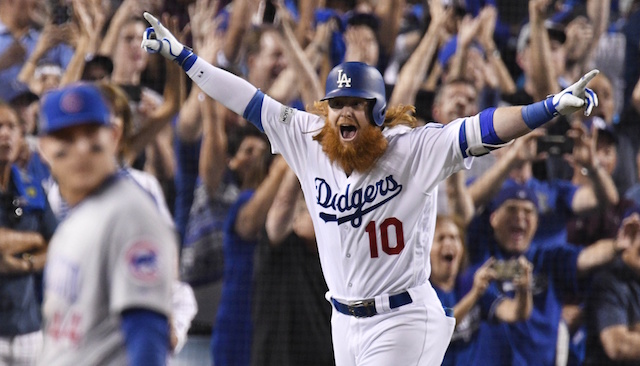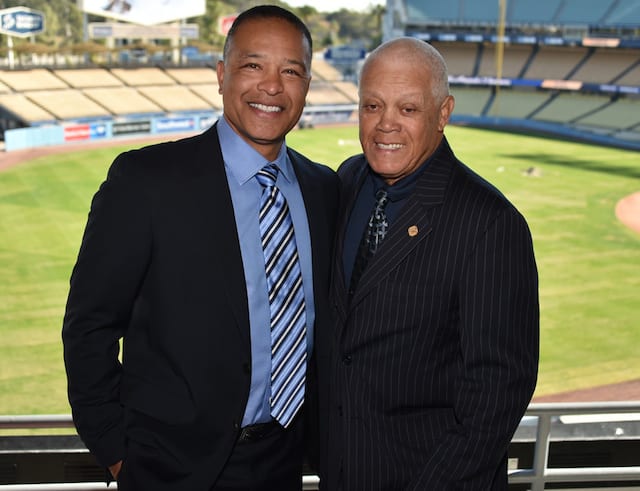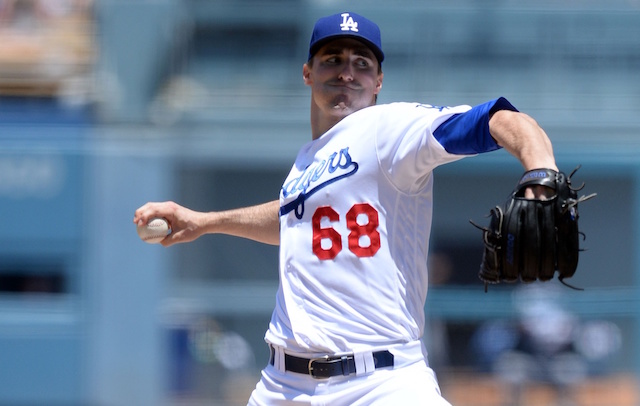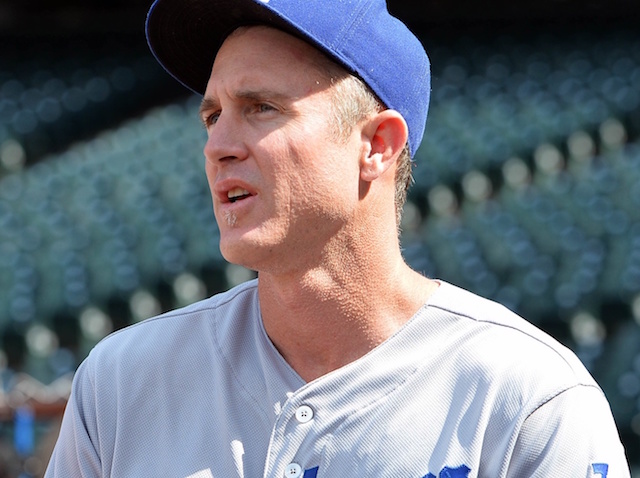The Los Angeles Dodgers are faced with many tough decisions this offseason — both in the form of free agents and potential trades. Re-signing Rich Hill was not one of them.
The Dodgers announced Hill’s return on Dec. 5, with the left-hander agreeing to a three-year, $48 million contract. The deal runs through Hill’s age-39 season. Widely considered to be the best starting pitcher on the market, fans should be thrilled with what is a perfect fit.
For any team, the concern with Hill is (obviously) his durability. If you’re looking for a 200-inning pitcher, Hill isn’t your guy — unless you’re looking at 2015 and 2016 combined.
This season, Hill threw 110 innings over 20 starts in time split with the Oakland Athletics and Dodgers. That marked the most Major-League innings he’d thrown in a year since 2007.
So shouldn’t the Dodgers be concerned? Well, yes, but they should be less concerned than any other team in baseball, because of their depth.
In today’s market Hill’s contract is roughly the value of a middle-of-the-rotation starter. Last winter, Scott Kazmir, John Lackey and Mike Leake signed contracts that averaged $16 million a season.
But the thing about Hill is, when healthy, he’s significantly better than a middle-of-the-rotation pitcher.
Only Clayton Kershaw had a lower ERA among pitchers with at least 110 innings pitched in 2016. Hill was also fourth in FIP (2.39) and ninth in strikeouts per nine innings (10.5).
Note: what you just read is not a typo.
“Sure, that sounds great, but what if he only makes 20 starts?”
Totally valid question. But this is where the Dodgers’ depth comes in.
In 20 starts, Hill produced 3.8 WAR (per FanGraphs) — the 18th best mark among pitchers this season. The pitcher just ahead of him (Aaron Sanchez) and just behind Hill (Jake Arrieta) both pitched 80+ more innings.
So, even if Hill only manages to make 20 starts, there’s plenty of value to be had. But don’t forget — Sanchez and Arrieta generated their wins over an extra 10-11 starts (outings Hill missed because of injury).
For the Dodgers, those starts don’t just disappear from the face of the earth, but are made up by others on the staff.
Enter Jose De Leon, Scott Kazmir, Brandon McCarthy, Hyun-Jin Ryu, Brock Stewart, Ross Stripling and Alex Wood. Some of whom may not be in the starting rotation, assuming full health.
Even if the aforementioned pitchers fill in for 10 starts at replacement-level (0 WAR) value, Hill plus pitcher X remain the No. 18 pitcher in baseball.
Now, keep in mind those starters are almost definitely all better than replacement level.
For example, Alex Wood made 10 starts and three relief appearances in 2016. Combined, he generated 1.3 WAR in 60.1 innings. If you were to start Hill 20 times, and Wood 10 times, you’d actually generate the same WAR Corey Kluber had (in 32 starts), and 0.2 more WAR than Madison Bumgarner (34 starts).
For a team that doesn’t have 10 Major-League quality pitchers like the Dodgers, signing Hill came with significant risk. But for a team that does have such depth? It’s perfect.
Of course, Hill’s performance isn’t likely to remain at its current level all the way through age 39, but it doesn’t need to.
The Dodgers are adequately paying 37-year-old-Hill and, given the market trends regarding the cost of pitching as well as Hill’s overall style of pitching, which should age better than a power pitcher, paying $16 million for 39-year-old Hill doesn’t project to be an albatross, either.
At the end of the day, for a team that doesn’t figure to have a ton of cash to splash around this offseason, re-signing Hill is a move that helps the Dodgers ‘win now.’
Hill was the only frontline starter available, he’s familiar with the clubhouse and culture and he seems to have plenty left in the tank. Add in the relative affordability, and he’s the perfect signing for a team aiming for their fifth-consecutive National League West title.



